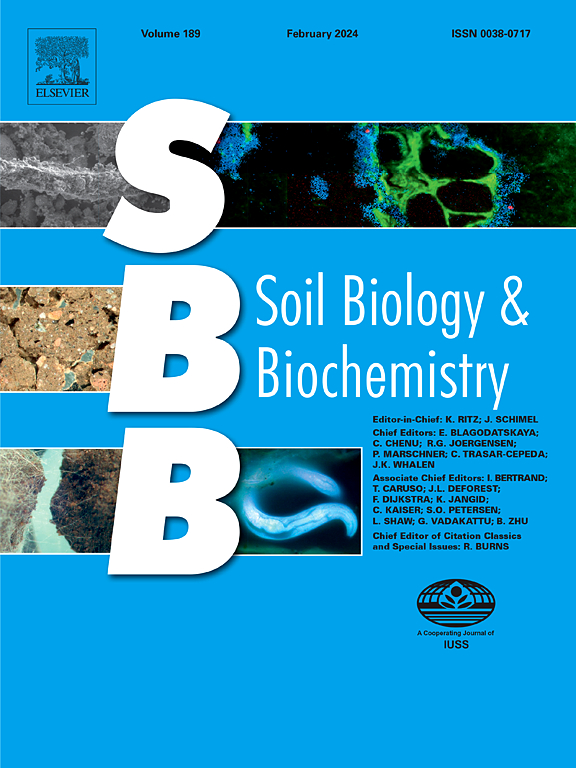Enhanced understanding of soil methane processes through modeling microbial kinetics and taxonomy
IF 9.8
1区 农林科学
Q1 SOIL SCIENCE
引用次数: 0
Abstract
Soil methane (CH4) emissions significantly impact climate change. However, microbial controls of CH4 in global carbon cycle gain less attention than CO2, hindering the understanding of CH4 processes. Here, stemming from a baseline model (MENDmm1) with one microbial group, we developed a microbial-explicit CH4 model by representing six microbial groups following Michaelis-Menten kinetics (MENDmm6). We compared MENDmm6 with MENDfo6 (first-order kinetics) and MENDmm5 (excluding syntrophic acetate oxidation, SAO), alongside MENDmm1. Split-sample calibration and validation were conducted using high-temporal-resolution CO2 and CH4 effluxes from two soils (Oxisol and Mollisol) under five oxygen-fluctuation treatments. MENDmm6 (mean R2 = 0.66) improved CH4 modeling by 47% over MENDmm1 (mean R2 = 0.45), with a 15% improvement for CO2. MENDmm6-simulated methanogenic and methanotrophic biomass closely matched observed OTU abundances (r = 0.69–0.94), except for methanotrophs in the Oxisol (r = 0.13). Furthermore, including microbial processes without explicit microbial kinetics (MENDfo6) did not improve model performance over MENDmm1. Neglecting SAO in MENDmm5 failed to explain the observed hydrogenotrophic methanogenesis dominance. Our results emphasize the significance of explicit microbial communities and kinetics in CH4 modeling. The proposed MENDmm6 model, leveraging molecular measurements of CH4-cycling microbes, will enhance predictions of management impacts on CH4 emissions, crucial for climate mitigation.求助全文
约1分钟内获得全文
求助全文
来源期刊

Soil Biology & Biochemistry
农林科学-土壤科学
CiteScore
16.90
自引率
9.30%
发文量
312
审稿时长
49 days
期刊介绍:
Soil Biology & Biochemistry publishes original research articles of international significance focusing on biological processes in soil and their applications to soil and environmental quality. Major topics include the ecology and biochemical processes of soil organisms, their effects on the environment, and interactions with plants. The journal also welcomes state-of-the-art reviews and discussions on contemporary research in soil biology and biochemistry.
 求助内容:
求助内容: 应助结果提醒方式:
应助结果提醒方式:


